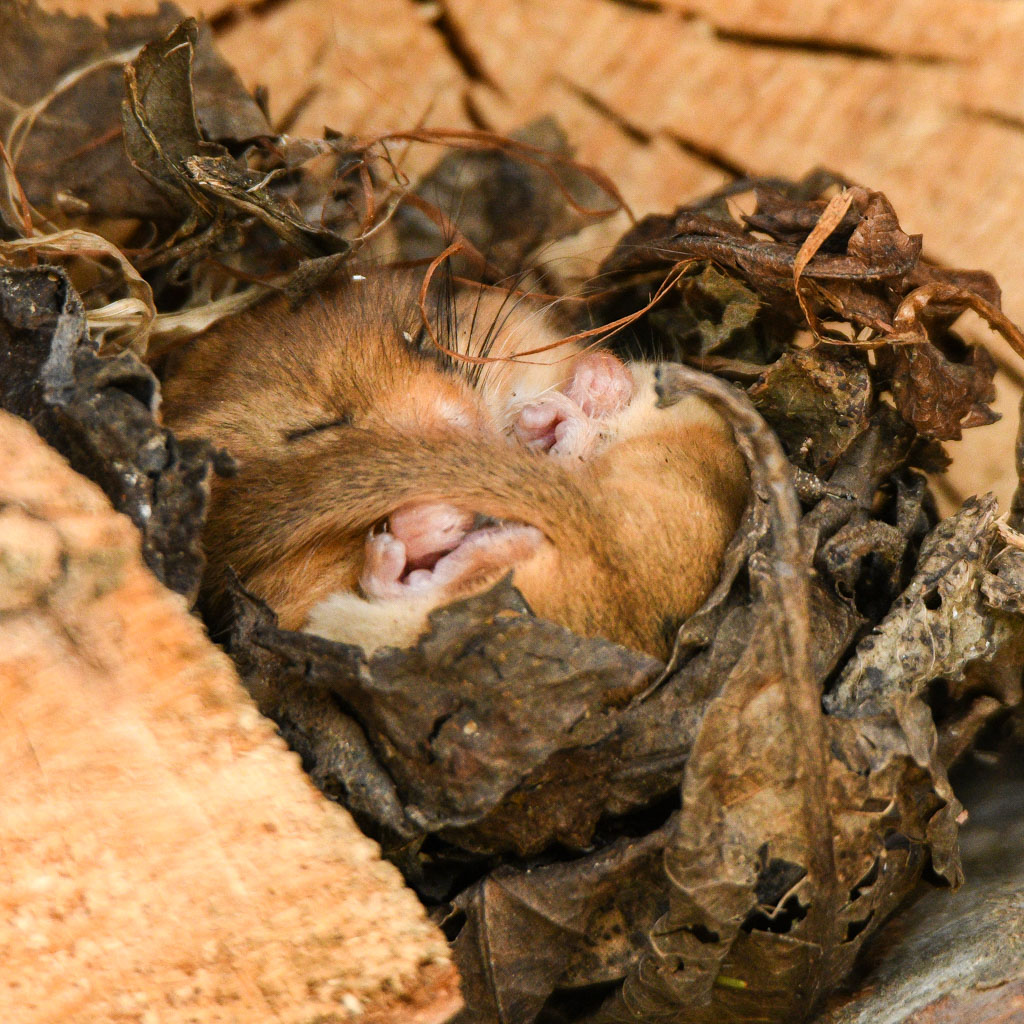I saw a post recently about some woodland coppicing work actively done to help dormice and I realised that I don’t know a lot about them – other than they look cute curled up in their nests and they are decidedly more flexible than I am!
Dormice do spend a lot of time sleeping: they’re nocturnal for starters and can hibernate for up to seven months. They’ll also go into a state of torpor in the summer when food is scarce to conserve energy. As a result, it’s possible that their name comes from the French word ‘dormir’ – to sleep.
They’re woodland and hedgerow creatures feeding on seeds, nuts, berries, flowers and insects. Important species for dormice include hazels (favourite), oak, bramble, honeysuckle (like this for nesting material as well as food), willow, hawthorn, broom, yew, sweet chestnut. As well as planting these woodland species, carry out regular coppicing and leave undergrowth especially brambles for them to hide and make nests in. Winter hibernating nests tend to be near the ground in or around coppiced trees, hazel stools, in tree cavities, leaf piles, log piles; or even underground. Their summer nests tend to be woven from honeysuckle, leaves and bark in the undergrowth and brambles.
They’re more common in southern England and Wales, and if you’d like to see if there are any around you, look out for hazel nuts that have been eaten. Dormice tend to make small, round, neat hole (squirrels trash them), with teeth marks following the edge of the hole like a neatly whittled out bead hole (voles and mice leave teeth marks that make it look like they’ve been at it with a chisel). Happy locating.
📷 Szymon Bartosz via Adobe Stock #239065395

